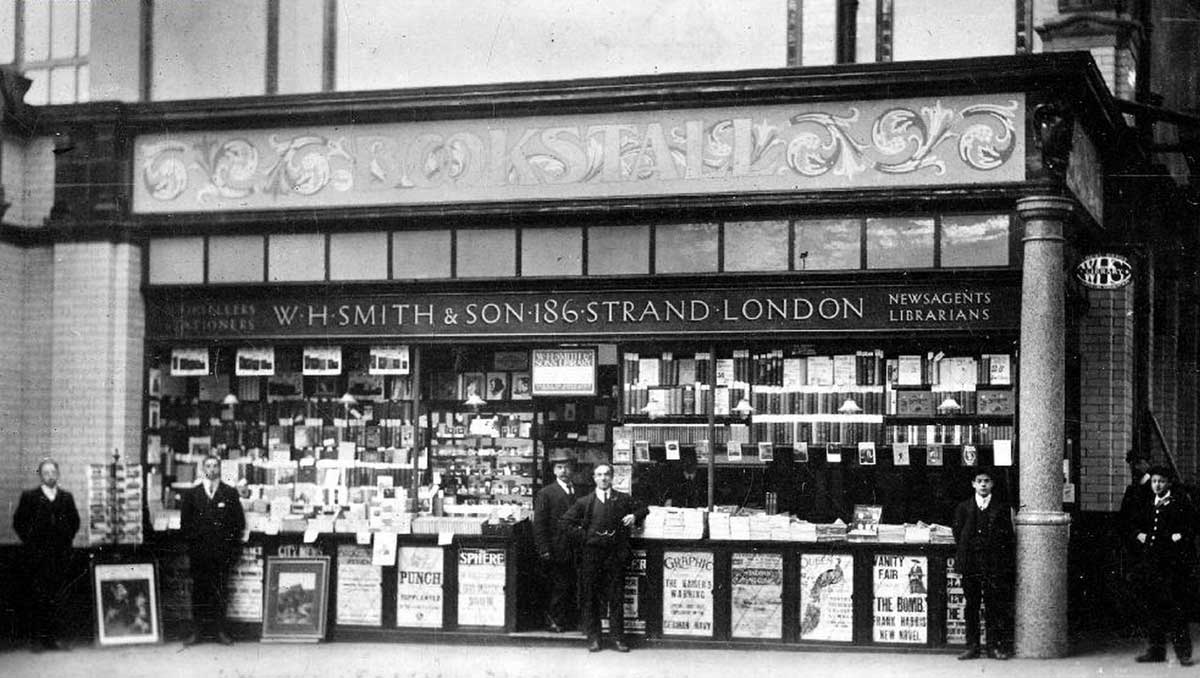The First WH Smith Railway Bookstall
Seeing the potential of the new technology, William Henry Smith opened his first railway bookstall on 1 November 1848.

The first William Henry Smith was born in 1792 just two weeks before the sudden death of his father Henry Walton Smith, who only a few months earlier had established a small ‘newswalk’ or newspaper round in Berkeley Square, London. The young Smith remained in the news trade, opening a reading room in the Strand in 1821. ‘First with the news’ was his proud boast, as he created a country-wide newspaper distribution network based on the mail-coach system.
His son, William Henry II (1825-91), who became a partner in the family business in 1846 at the peak of ‘railway mania’, saw the potential of the new technology more quickly than his father. Railways offered a faster and more reliable way of sending newspapers to the farthest corners of the country, and by building up good relationships with each of the competing regional companies, Smith soon created a genuinely national business. He even demanded (unsuccessfully) that trains be held up to await late deliveries of The Times.
From the early 1840s, many stations had vendors (often superannuated or disabled railway employees) selling disreputable publications or soiled newspapers. Smith, though, who realised that reading was far less difficult on a train than on a swaying stage-coach, was convinced that the opportunity existed for a more professional business selling papers and cheap books to the thronging passengers (who made 60 million journeys between them in 1850, each visiting at least two stations). Euston, the London terminus for the London North-Western Railway, was his first chosen site, and in the summer of 1848 he began negotiations. The vendor in situ, an ex-LWNR messenger called Gibbs, was unceremoniously moved aside and the first WH Smith railway bookstall opened on November 1st.
By 1860 Smith’s bookstalls were to be seen on all main lines and many secondary ones. It was a cultural revolution, as well as a commercial one: The Times reported ‘a wholesome change in railway bookstalls... at the North Western terminus we diligently searched for that which required but little looking for in other places, but we poked in vain for the trash.’ In place of the ‘trash’, Smith provided ‘yellowbooks’ – cheap reprints of out-of-copyright volumes – while Longman’s brought out a ‘traveller’s library’ specifically for the new market, to supplement the newspapers.
Smith, a Dissenter dubbed ‘Old Morality’ by Punch (he had had to be dissuaded from a career in the church), insisted on vetting the quality of the books he sold and the content of the advertisements he displayed. His tastes, though, clearly were in accord with Victorian Britain, and the Smith’s bookstalls epitomised railway travel up to the Second World War and still flourish today.
In 1905, when the rental contracts for the 2,000 Great Western and London and North Western Railways stations were up for renewal, the business was faced with steep rent increases. The company responded by opening 150 new shops in the streets leading to the stations instead, each one fitted out in the recognisable company style. The decision meant that, when some sixty years later the railway network was slashed back by Dr Beeching, WH Smith & Son was secure.




